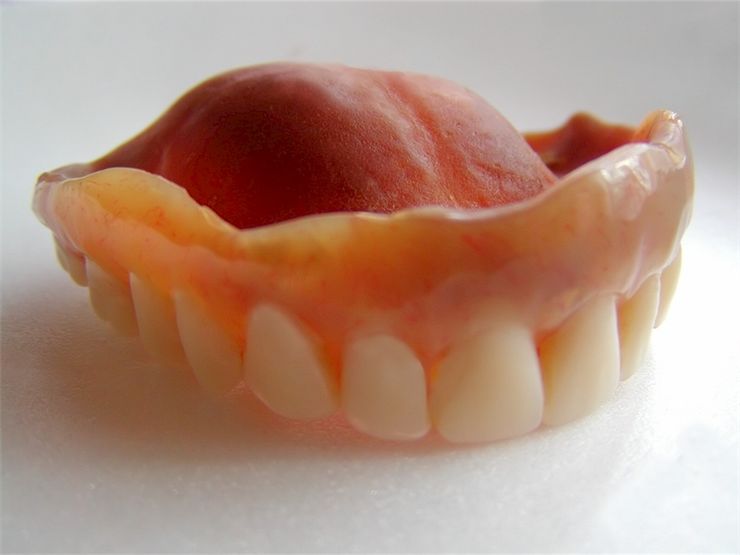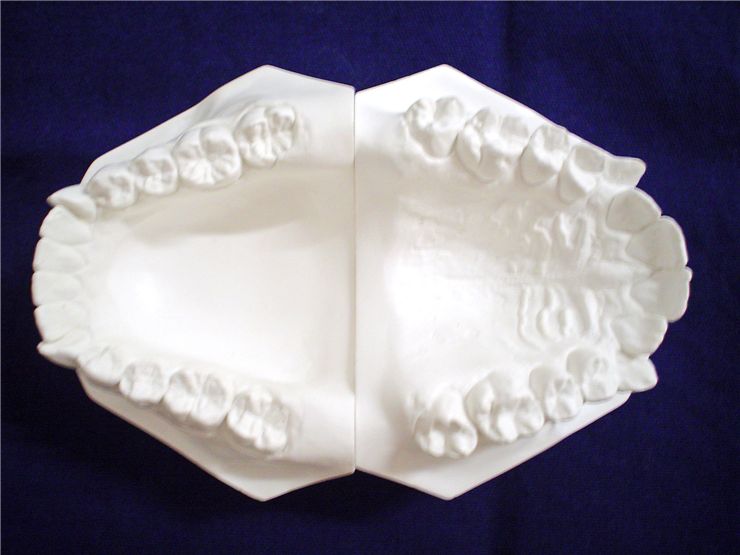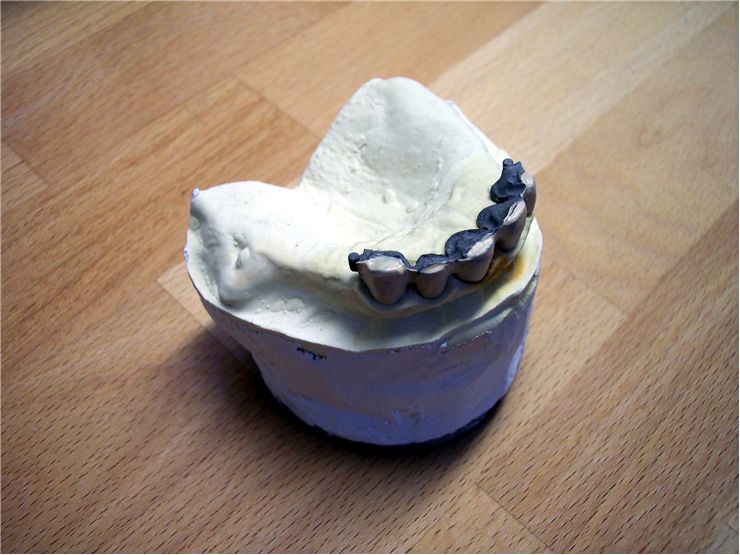History of Dentures - Invention of Dentures
Dentures are prosthetic devices whose role is to replace missing teeth. They are also called false teeth. There are two main categories of dentures, those that are used to replace missing teeth on the mandibular arch or those made to replace teeth on the maxillary arch.
False teeth are very old prosthetic devices. There are dentures dating from 2500 BC found in today’s Mexico and made from, what appears to be, wolf teeth. The Etruscans of Italy used gold wire or bands to attach human and animal teeth around 700 BC. Two false teeth, made from bone, were found wrapped in gold wire in the ancient Egyptian tomb of El Gigel. Europe didn’t have much on that field until the end on Renaissance. They were focused on removing teeth. The first recorded wooden dentures in Japan appeared in 16th century and were used until beginning of 20th century. During 18th century, dentists experimented with dentures made out of human and animal teeth and carved ivory. Dentures were made by professional goldsmiths, ivory turners or students of barber-surgeons. United States President George Washington was one of the people of the time that had dentures. They were made with ivory from hippos and elephants, real human teeth, gold, rivets, spiral springs. Although legend says so, he never had wooden teeth.
Alexis Duchâteau made the first porcelain dentures in 1770. Before that he wore dentures made from hippopotamus but they began to rot so he tried to make something more durable. His first tries fell short but when he teamed up with Nicholas Dubois De Chemant, a dentist, they managed to make a pair that Duchâteau could wear. They looked nice but had a problem that they chipped easily. Nicholas Dubois De Chemant improved porcelain for dentures, making it stronger, and patented the first British patent for porcelain dentures in 1791. An improved version of porcelain dentures mounted on 18-carat gold plates was made by Samuel Stockton, a goldsmith, in 1820.
In 1850s, dentures were made of Vulcanite, a type of hardened rubber, with porcelain teeth. Vulcanite was cheap and dentures became available to wider population. Only problem was the copyright under which was manufacturing of Vulcanite so an alternative was sought and found in aluminum whose popularity lasted until copyright on Vulcanite expired and it became standard denture base material. Celluloid was invented in 1868 by Hyatt and was used as a denture base material 1890 but it had unpleasant odor because it used camphor as plasticizer. It also didn’t hold shape for long but it marked beginning of plastics as materials for dentures. Bakelite bas found in 1909 and was used in dentistry from 1924 and 1939. When the improved resins were introduced in 1940, they suppressed the use of Vulcanite. From 1938 polymethylmethacylite (PMMA or acrylic resin) became prevailing material for denture base. It is hard, translucent and inert (has no unpleasant odor or toxicity), it can be easily repaired and it is inexpensive. Because of these characteristics it is still used today as a quality base for dentures.


